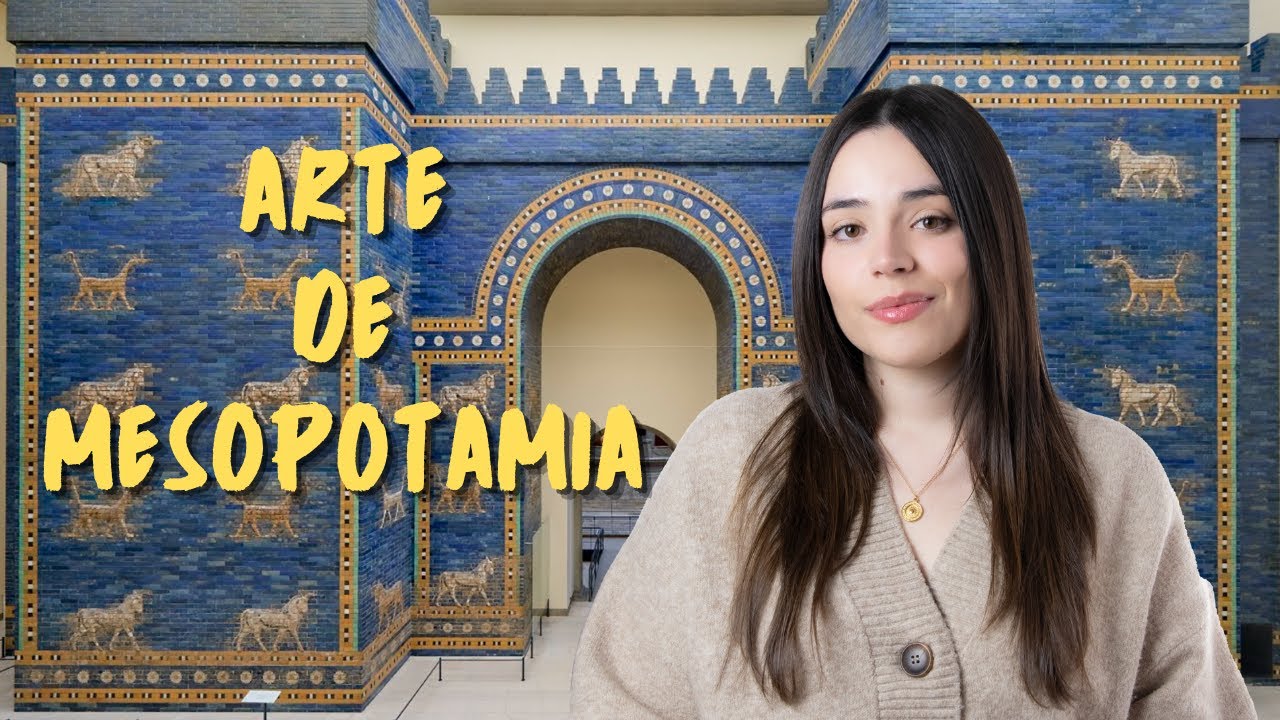The rise and fall of history’s first empire - Soraya Field Fiorio
Summary
TLDRThe Sumerian civilization, emerging from the Mesopotamian region of modern-day Iraq, was the world's first empire. Despite the arid landscape, Sumerians developed agriculture through irrigation, leading to the construction of the first cities using mud bricks. They invented the wheel and established a complex social structure with city-states, each with a king and a patron deity. Trade and the need for accounting led to the creation of cuneiform, the first writing system, which facilitated the drafting of laws and the establishment of the first schools. Sumer's cultural influence spread through conquests and adoption by other civilizations, such as the Akkadians and Babylonians, who further disseminated Sumerian inventions and traditions to later cultures. Despite the civilization's eventual decline, its legacy endures in the foundations of modern society.
Takeaways
- 🏺 Sumerians built the world's first cities using mud bricks, despite the lack of trees and stones.
- 🌾 They developed agriculture through irrigation techniques, redirecting water from the Tigris and Euphrates rivers.
- 🏙️ The first cities, such as Uruk, Ur, and Eridu, emerged around 4500 BCE, with a social hierarchy led by priests and priestesses.
- 🛠️ The Sumerians invented the wheel, initially in the form of a potter's wheel for crafting household items.
- 📚 They created the world's first writing system, cuneiform, which started as a system of accounting and evolved into a script.
- 🛣️ Around 3200 BCE, Sumerians expanded their reach through trade networks, importing valuable resources from other regions.
- 🚢 Innovations in transportation included the use of the potter's wheel on chariots and wagons, and the construction of boats for river and sea travel.
- 🏛️ Each city had a ziggurat, a temple dedicated to its patron deity, which was the largest and most important building in the city.
- 📜 Sumerians established the first school system, where scribes learned accounting, mathematics, and literature.
- 🌐 Despite invasions and the decline of the Sumerian people by 1750 BCE, their culture and inventions influenced subsequent civilizations.
- ⏳ Sumerian culture was rediscovered in the 19th century, and its legacy continues through contributions to language, law, and bureaucracy.
Q & A
What was the geographical location of the Sumerian civilization?
-The Sumerian civilization was located in the southern part of modern Iraq, in a region known as Mesopotamia, which means 'between two rivers', referring to the Tigris and Euphrates rivers.
How did the Sumerians manage to farm in a landscape without rainfall?
-The Sumerians used irrigation channels, dams, and reservoirs to redirect river water and farm large areas of previously dry land.
What was the significance of the invention of the potter's wheel by the Sumerians?
-The potter's wheel was significant as it was used for turning mud into household goods and tools, and later it found a new application on chariots and wagons, aiding in the expansion of their reach.
What materials did the Sumerians primarily use to construct their cities?
-The Sumerians primarily used clay bricks made from river mud to build their cities, which included multi-storied homes and temples.
How did the social structure of Sumerian cities look like?
-The social structure was hierarchical, with priests and priestesses at the top, considered as nobility, followed by merchants, craftspeople, farmers, and enslaved people.
What was the nature of the Sumerian empire and how was it organized?
-The Sumerian empire consisted of distinct city-states that operated like small nations. They were loosely linked by language and spiritual belief but lacked centralized control.
Who were the earliest known city-states of the Sumerian civilization?
-The earliest cities of the Sumerian civilization were Uruk, Ur, and Eridu.
What was the role of a king in a Sumerian city-state?
-Each Sumerian city had a king who served a role somewhere between a priest and a ruler, often involved in both religious and administrative duties.
How did the Sumerians expand their reach around 3200 BCE?
-The Sumerians expanded their reach by using the potter's wheel on chariots and wagons, building boats out of reeds and date palm leaves, and establishing a trade network with rising kingdoms in Egypt, Anatolia, and Ethiopia.
What was the impetus for the invention of the world's first writing system by the Sumerians?
-The invention of the world's first writing system, cuneiform, started as a system of accounting for Sumerian merchants conducting business with traders abroad.
What were the subjects taught in the first school system created by the Sumerians?
-The first school system taught the craft of writing, accounting, mathematics, and included copying works of literature, hymns, myths, proverbs, animal fables, magic spells, and the first epics on clay tablets.
How did the Sumerian civilization eventually disappear, and when was it rediscovered?
-The Sumerian civilization disappeared due to a steady onslaught of invasions that killed off the Sumerian people by 1750 BCE. It was not rediscovered until the 19th century.
Outlines

Этот раздел доступен только подписчикам платных тарифов. Пожалуйста, перейдите на платный тариф для доступа.
Перейти на платный тарифMindmap

Этот раздел доступен только подписчикам платных тарифов. Пожалуйста, перейдите на платный тариф для доступа.
Перейти на платный тарифKeywords

Этот раздел доступен только подписчикам платных тарифов. Пожалуйста, перейдите на платный тариф для доступа.
Перейти на платный тарифHighlights

Этот раздел доступен только подписчикам платных тарифов. Пожалуйста, перейдите на платный тариф для доступа.
Перейти на платный тарифTranscripts

Этот раздел доступен только подписчикам платных тарифов. Пожалуйста, перейдите на платный тариф для доступа.
Перейти на платный тарифПосмотреть больше похожих видео

War and peace on the Standard of Ur

The rise and fall of the Assyrian Empire - Marian H Feldman

What Happened to the Mesopotamian Civilization?

MESOPOTAMIA, el ARTE de las PRIMERAS CIVILIZACIONES de la HISTORIA | OBRAS y CARACTERÍSTICAS

Os Sumérios: A Primeira Grande Civilização - Grandes Civilizações da História - Foca na História

The Tigris and Euphrates Rivers
5.0 / 5 (0 votes)
